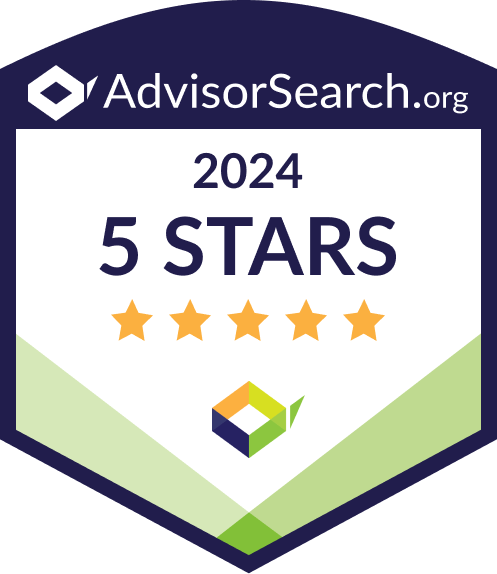Charitable Giving in 2021 and Beyond

Giving Tuesday” was November 30th this year, but you have until December 31st to make charitable contributions that qualify for a 2021 tax deduction. With the increase in the standard deduction starting in 2018, many people no longer have been able to reduce their tax bill with their charitable donations because their standard deduction now exceeds the total of their itemized deductions. However, philanthropy, whether on a small scale or large, still plays a part in many of our lives, regardless of any tax break for which we may qualify. And tax benefits still exist, especially in 2021.
Take Advantage of Special Gifting Opportunities in 2021
The Cares Act that was passed in response to the coronavirus crisis includes a provision that, in 2021, taxpayers can take a $300 (single)/$600 (joint) charitable deduction even if their total itemized deductions do not exceed their standard deduction. So make sure to give a record of your charitable contributions to your tax preparer.
Another provision in the Cares Act allows taxpayers to deduct 100% of cash contributions to public charities in 2021 up to 100% of Adjusted Gross Income (AGI), rather than the normally-allowed 20%-60%, depending on the type of contribution and type of charity. Therefore, bunching several years’ worth of contributions to one or more charitable organizations into 2021 may be a particularly good strategy this year for donors planning large gifts because it may provide a larger deduction than in normal years. However, this temporary rule change only applies to cash gifts made directly to the charitable organization and not to non-cash gifts or donations made to a donor-advised fund or a private foundation.
Bunch Charitable Contributions into One Year
For taxpayers whose itemized deductions are close to their standard deduction, they may consider bunching two or more years of contributions into one year and taking the standard deduction in the other year(s).In 2021, the standard deduction is $12,550 single/$25,100 joint. If you are age 65+, the figures are $14,250 single and $27,800 joint. So, for example, if a couple under age 65 filing jointly has $26,000 in itemized deductions, including $6,000 in charitable contributions, only the last $900 of that exceeds their $25,100 standard deduction. If they are in the 22% marginal tax bracket, itemization will save them only $198 in taxes in 2021 and $22 in 2022, when the standard deduction rises to $25,900, for a two-year total savings of $220. But if they double their 2021 contributions to $12,000, their itemized 2021 deductions will exceed the standard deduction by $6,900 and itemization saves them $1,518 in taxes. Then next year they can skip their contribution and take the standard deduction. Bunching may be especially valuable in the last year before retirement, when one’s marginal income tax rate is typically higher than it will be in retirement.
Use Charitable Contributions to Offset Income from Roth Conversions
If you are considering a Roth conversion before the end of the year, you may be able to offset part or even all of the additional taxable income created by the conversion by making charitable contributions. When you convert all or part of a Traditional IRA into a Roth IRA, the amount of the conversion is taxable income at ordinary income tax rates. Any charitable contributions you are able to make in excess of your standard deduction can offset additional income from the Roth conversion and reduce your tax liability.
Make a Qualified Charitable Distribution
If you have reached age 70½, you can make a Qualified Charitable Distribution (QCD) of up to $100,000 from your Traditional IRA to a qualified charity. This reduces federal taxable income, like a tax deduction, even if you use the standard deduction. The money must be moved directly to the charity from your IRA without your taking possession of it first.
Contribute Appreciated Securities
A taxpayer can contribute an appreciated stock or other security that has been held for at least one year to a qualified charity and take the fair market value as an itemized deduction up to 30% of the Adjusted Gross Income. When this is done, no capital gains taxes apply to the donor. This may be particularly beneficial to someone who has a very large position in one stock and is reluctant to pare back that position out of fear of capital gains taxes. Note: Some securities, such as restricted or privately traded securities, real estate, collectibles, or cryptocurrency, may have additional requirements and limitations.
Consider a Donor Advised Fund…
A Donor Advised Fund (DAF) is like a personal charitable savings account that is controlled by a nonprofit, referred to as a sponsoring organization, that invests the assets and manages the account. Two such sponsoring organizations are Fidelity Charitable and Schwab Charitable. A DAF allows donors to make an irrevocable charitable contribution, receive an immediate tax deduction and then recommend grants from the fund over time. Donors can contribute cash, securities, or other assets to the fund as frequently as they like, and then recommend grants to their favorite charities whenever it makes sense for them. The annual limit for contributions to DAFs is 60% of AGI. DAFs offer a good vehicle for bunching contributions in a single year, as described above, because you do not have to specify the charity at the time of the contribution.
…or a Private Foundation
Highly philanthropic people who want to make substantial charitable contributions and leave a legacy to be carried on by future generations may want to consider setting up a private foundation. A private foundation is managed by its own board of directors, receives most of its financial support from and is normally controlled by its founders, and must make charitable distributions throughout the taxable year. A private foundation is a tax-exempt organization, but must pay a nominal excise tax on net investment income. Although it typically makes grants to public charities, it can also run programs, provide services, and conduct direct charitable activities, as well as provide aid to individuals and families for disaster relief and hardship assistance. Setting up a private foundation will likely require the assistance of a CPA or attorney. The annual limit for contributions to private foundations is 30% of AGI.
Note on Donor Disclosure
Names of donors to public charities and donor advised funds are not required to be disclosed to the public. However, identities of contributors to private foundations are not exempt from disclosure.
About The Author
Anne Christopulos
Anne is a Managing Director and Financial Planner with over twenty years of experience in the financial services industry. After holding corporate management positions in finance and strategic planning in New York City, she moved to Boston to become the Product Manager for the IRA business at Fidelity Investments. Following that, she was Vice President, Retirement Investments, at Fleet Financial Services. A native of Cape Cod, she returned to the Cape in 2001 and made the transition to personal financial planning with Secure Future Financial Services in Dennis and Davis Financial Services in Orleans before joining West Branch Capital. Anne holds a B.A. in music and economics from Wellesley College and an MBA from Harvard Business School.
Recent Articles

Categories



